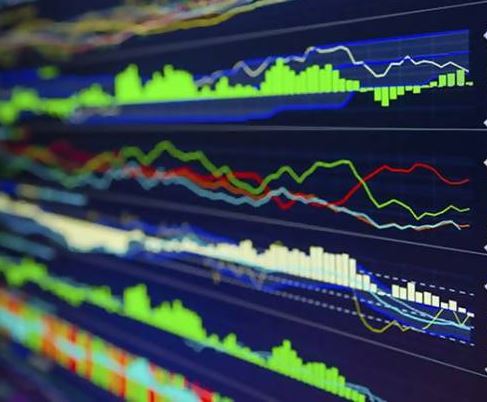Algorithmic trading, which relies on computer programming, is one way traders can implement various strategies on the forex market. Automated trading makes it possible to trade without an individual participating.
In its simplest form, algorithmic trading involves executing various trading strategies based on historical data after the computer analyzes conditions for implementing them.
Essentially, algorithmic trading involves computer programs initiating entry and exit orders based on data analyses and executing those orders based on various trading strategies the computer identifies.

1. Trend Following Strategy
A trend-following trading strategy is the easiest to implement through automated trading. The system follows market trends and places buy or sell orders when the technical indicators meet a predetermined set of conditions. The system compares current and previous market trends to identify trading opportunities.
2. Forex Scalping or High-Frequency Trading
HFT, or high-frequency trading, has recently gained popularity in the forex market. Trades can be executed within milliseconds with aggressive short-term strategies. Buy and sell signals are generated, and trades are executed in milliseconds. Traders can carry out thousands of trades daily, allowing them to score a positive win-loss ratio. Arbitrage strategies are also executed.
3. Arbitrage
To take advantage of the price difference between multiple markets, arbitrage involves taking advantage of the price difference. Since forex price differences are measured in micro pips, traders might need to invest in large positions to accomplish this in the forex market. The triangular arbitrage strategy can be deployed through algorithmic trading by using two currency pairs and a cross-currency pair between them.
4. News Trading
Crucial news releases, economic data releases, and geopolitical changes trigger the volatility of the forex market. There are news-based automated trading strategies that are connected to news wires. As a result of the difference between consensus and actual figures in economic indicators, the system can generate trade signals. As well as adding technical indicators, traders can also specify specific parameters. It allows them to profit from sudden market reversals, often seen after releases of reports like the US NFP (Non-Farm Payroll Report).
5. News Sentiment or Market Sentiment
As part of their trade placement algorithms, hedge funds have used news and market sentiment data for many years. Powerful tools like Artificial Intelligence (AI) and Natural Language Processing (NLP) can now sift through millions of news articles, social media comments, opinion articles, and analyst reports to identify and predict market sentiment using powerful technologies like AI (Artificial Intelligence). By utilizing commercial and non-commercial positioning, tops and bottoms in the market can be predicted.
6. Mean Reversion Strategies
Traders use means reversion strategies by trading in pairs to take advantage of spreads between two correlated currencies. It is based on the idea that currency prices will eventually return to their mean values or averages. Trading means reversion trades can be done using technical indicators such as the RSI, Money Flow, and Bollinger Bands to identify overbought and oversold levels. In algorithmic trading strategies based on mean reversion, historical data is used to determine average asset prices and whether current prices will revert to the average price.

7. Iceberg Order Strategies
Large institutional traders typically use these strategies to divide large orders into smaller limit orders, which are executed through different systems to avoid sudden currency price disruptions.
Bottom line
In algorithmic trading, emotions are taken out of the trading process. Most traders realize how disciplined they need to be to follow the rules they have outlined when designing strategies.
Using automated forex trading software and designing algorithms ensures that all trades adhere to the same rules, preventing emotions from interfering with the trading process.


